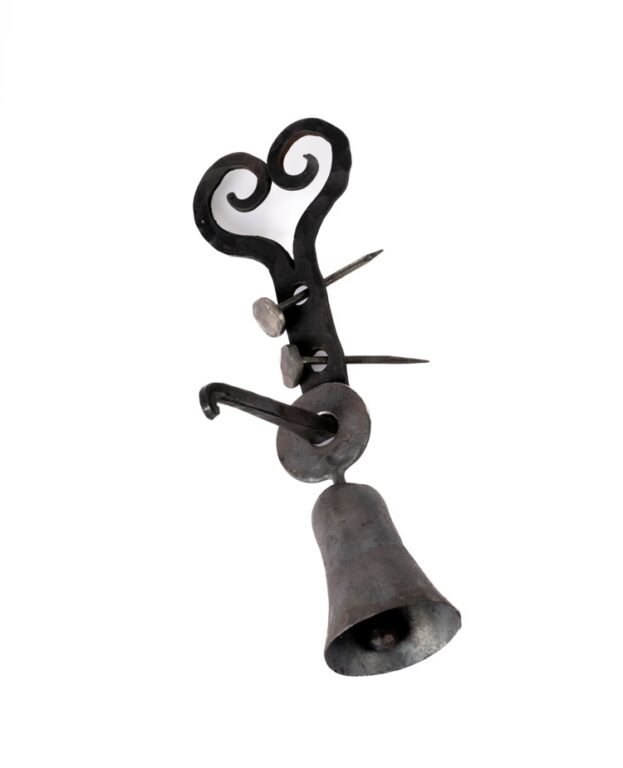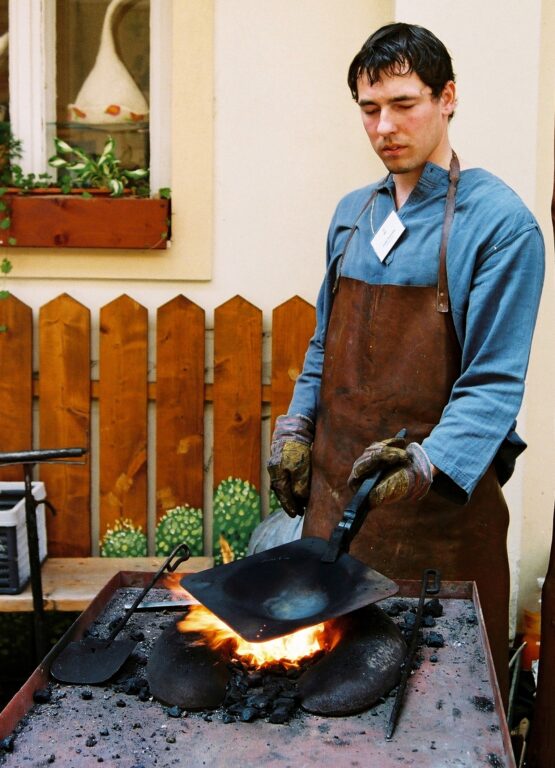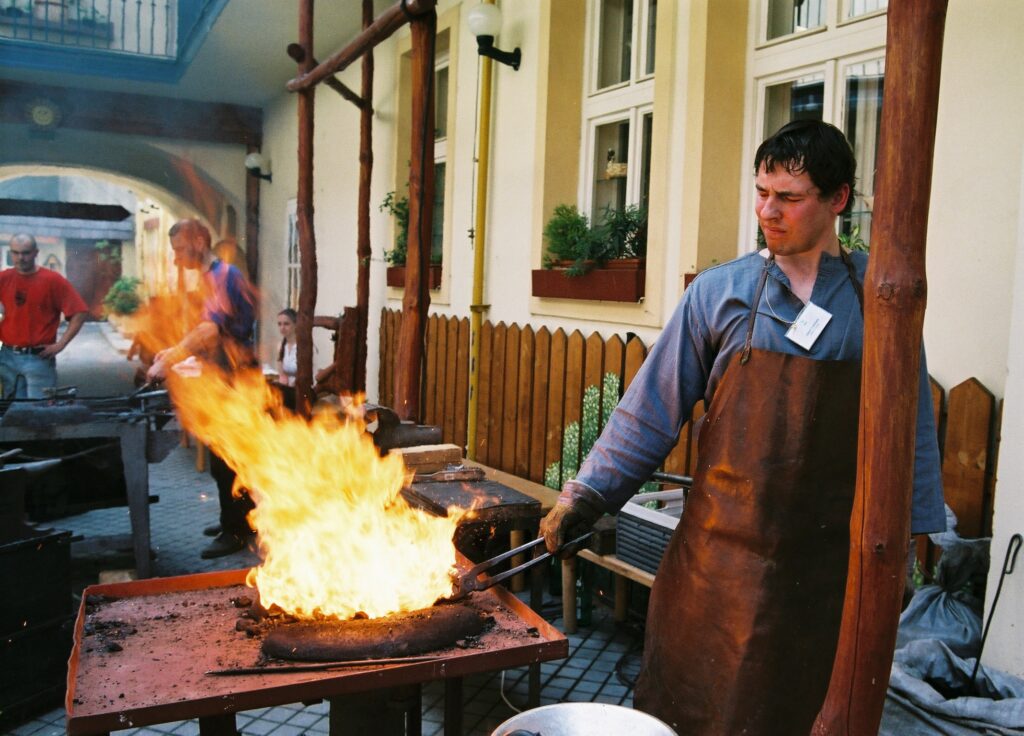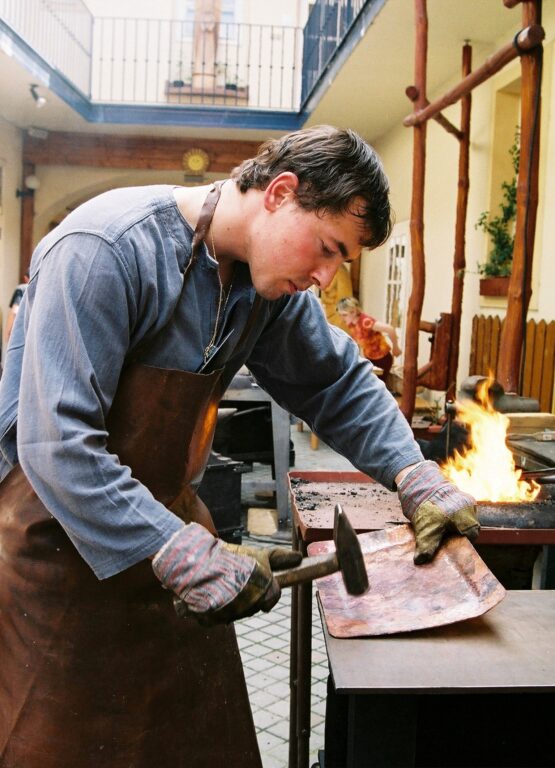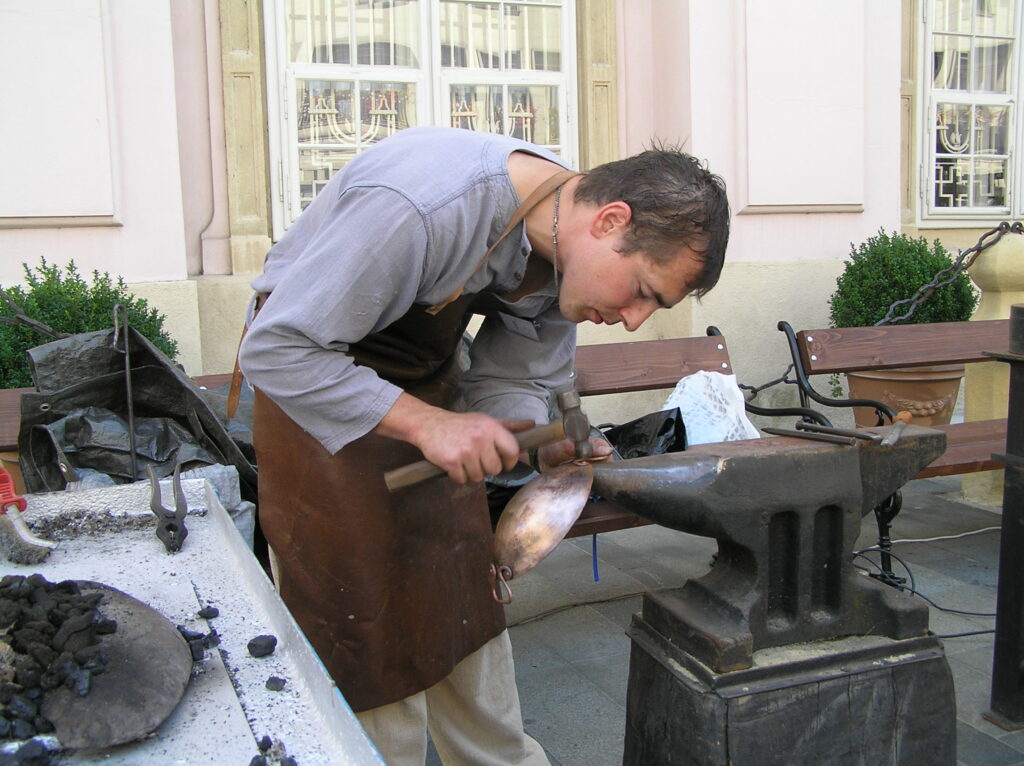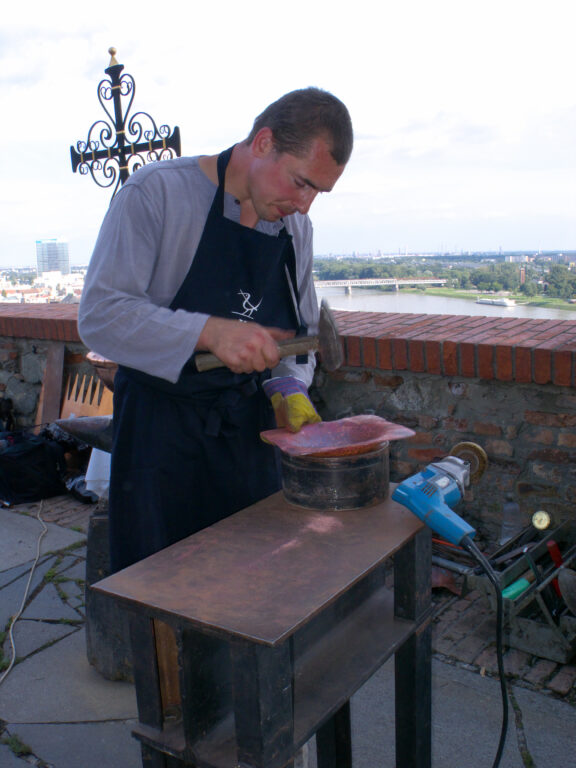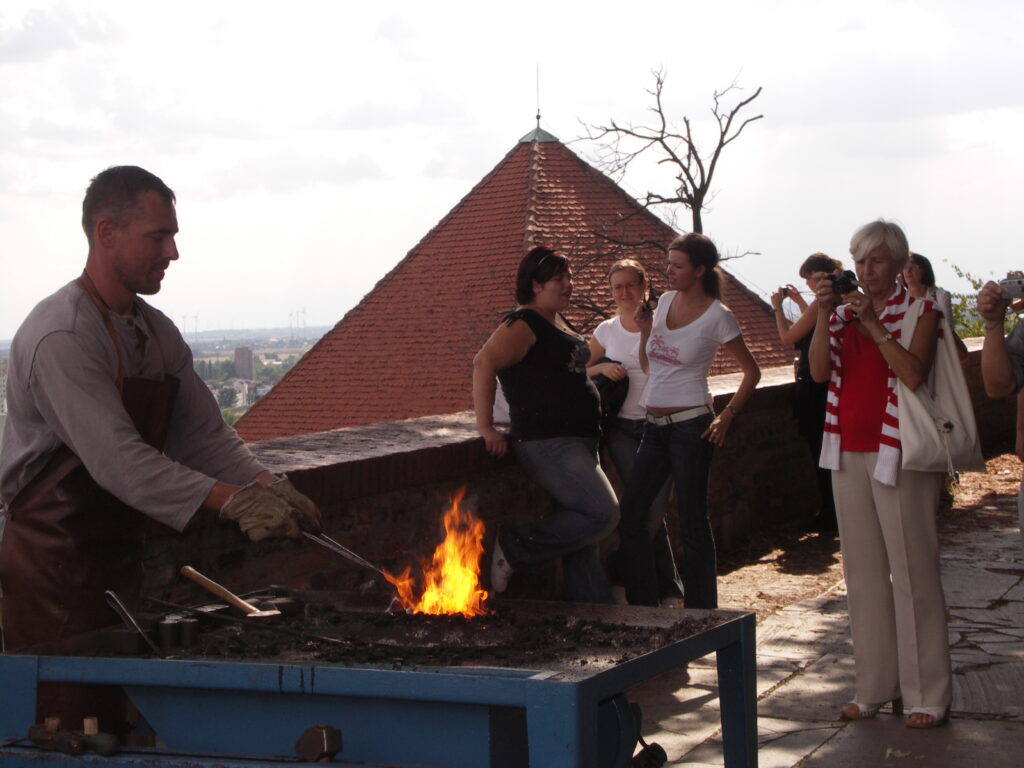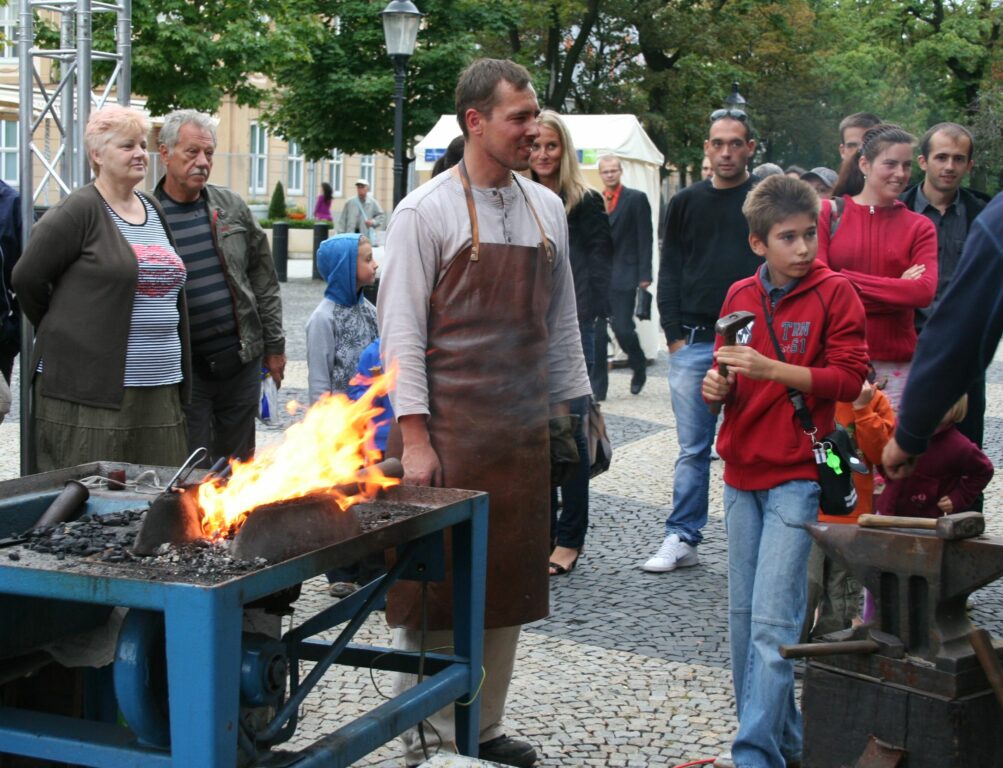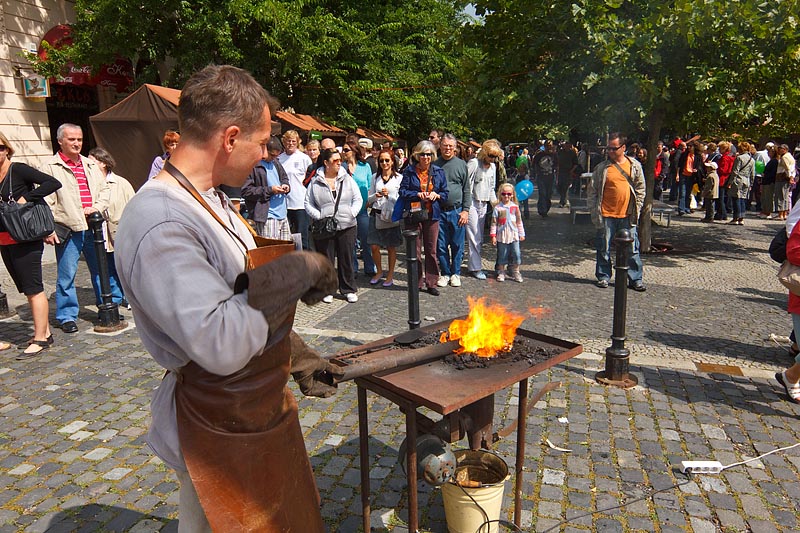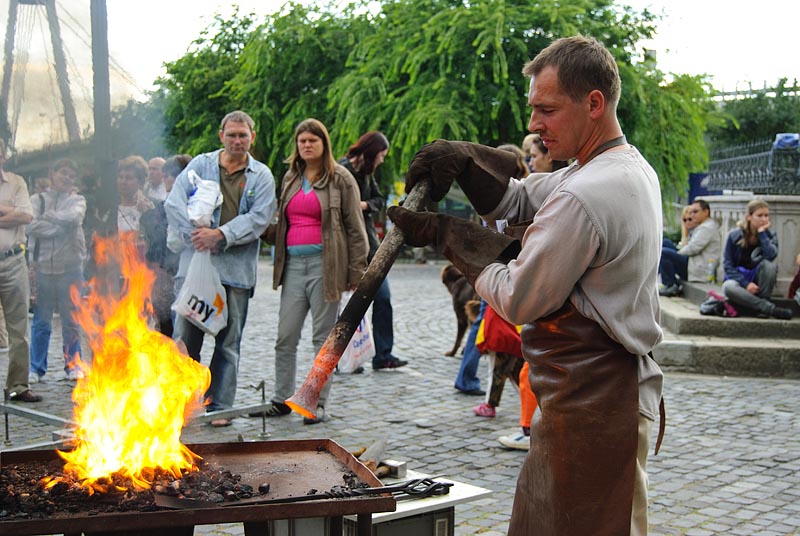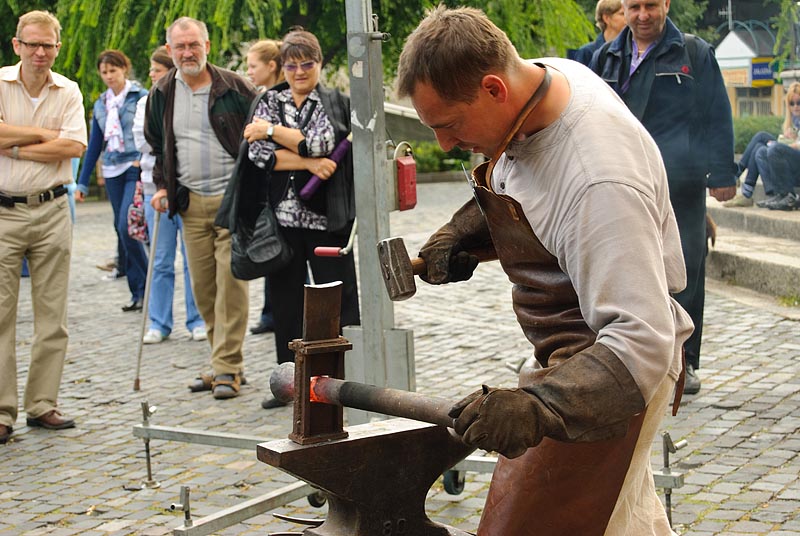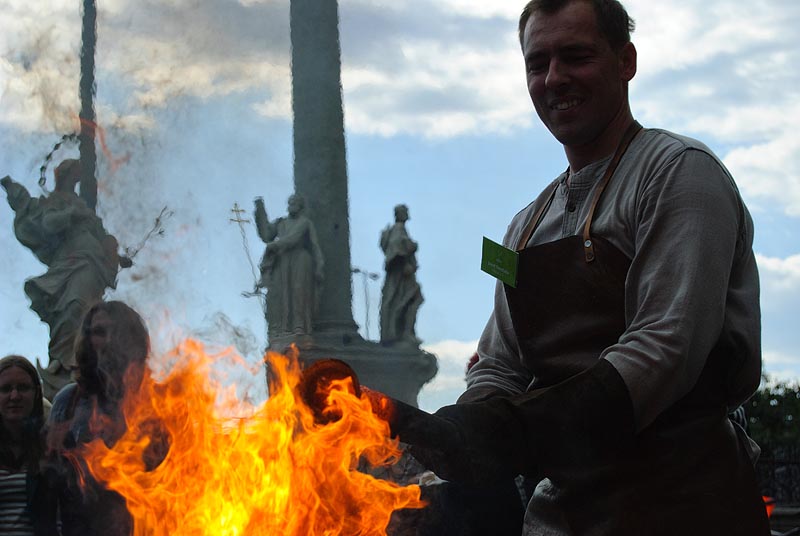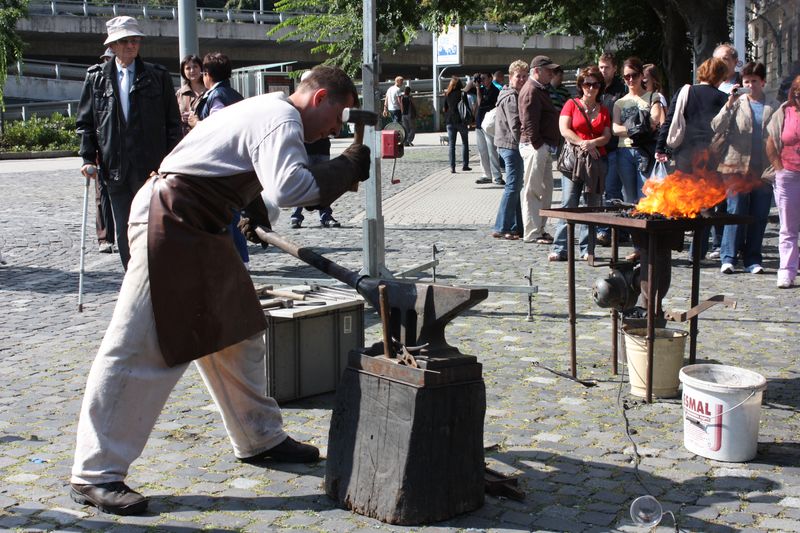As a child, he used to play in the yard with his brother with his father's blacksmith tools. He was also interested in modeling and he always carved wood, so when he applied for an apprenticeship in carpentry after finishing elementary school, it was not surprising. However, he was accepted for artistic craftsmanship in metalwork, focusing on blacksmithing and locksmithing,...
As a child, he used to play in the yard with his brother with his father’s blacksmith tools. He was also interested in modeling and he always carved wood, so when he applied for an apprenticeship in carpentry after finishing elementary school, it was not surprising. However, he was accepted for artistic craftsmanship in metalwork, focusing on blacksmithing and locksmithing, and within this field, he trained to become an artistic blacksmith under the guidance of Master Ľubomír Karenovič. At school, he acquired the basics and after completing military service, he worked as a blacksmith in a company that manufactured fences. Fortunately for his personal development, he was soon accepted for a two-year internship in the workshop of the renowned German blacksmith Master Manfred Bergmeister in Ebersberg. The foundation of work in this workshop, which had four masters out of twenty employees, was well-executed work. Mistakes were not tolerated, so the number of hours spent on a project was not important. The result was always crucial. Every detail had to be precisely crafted following old blacksmithing techniques. Here, Jozef Tomčala gained a lot of experience, especially learning not to fear the restoration process, which he still uses today. He is particularly skilled in traditional blacksmithing techniques such as punching, riveting, and nailing, which are highly valued by heritage preservationists during the restoration of old objects and their components. In other tasks he undertakes, especially in construction solutions, he also uses more modern welding methods such as flame, electric, carbon dioxide, and argon welding, for which he also holds state exams. Upon returning from Germany, he started his own business as an independent craftsman with his own blacksmith workshop. He is based in Lehnice near his hometown of Dunajská Streda and specializes in artistic restoration of crosses and old grids. He produces artistic objects from copper, such as spheres and ornaments for churches, and creates wrought iron gates and furniture, but he can also adapt to any customer’s desires. Currently, the best-selling items are home furnishings such as railings, grids, and gates. Although he only marginally devotes himself to products for the Center for Folk Art Production – such as bowls, plates, trays, kettles, and sculptures – he thoroughly enjoys working on them. His collaboration with the center began in 1999 when the chief designer Janka Menkynová was looking for an artistic blacksmith to enrich the assortment of sales at the Center. The designs she had him make were successful and the items sold well, so he continues to meticulously craft them to this day. Additionally, he regularly participates in professional events organized by the Center for Folk Art Production, such as Master Days at the Center, the Rings on Water competition, the Blacksmith Days at the Courtyard of Crafts in 2004, and the demonstration of the craft and lecturing of blacksmithing courses at the Regional Center for Crafts in Bratislava. Of course, he also attends specialized blacksmithing events at Červený Kameň Castle, the Brtnické kovadliny event in Brtina, Czech Republic, and the European Roma Blacksmith Symposium in Dunajská Lužná. In 2010, Jozef Tomčala was awarded the title of Master of Folk Art Production for his preservation and development of iron forging and production of utility items from copper.
(Source: Čechmánková, N .: Jozef Tomčala – colorful play with fire. In: Craft, art, design. 12, 2011, no. 3, p. 11-13.)

